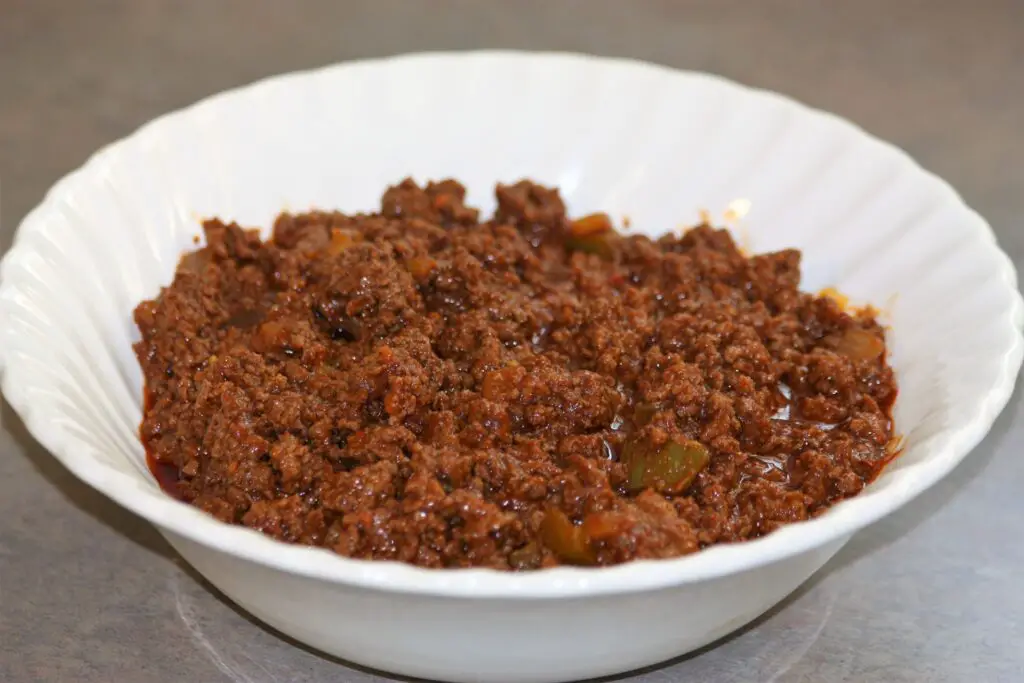Venison is an excellent source of lean protein, which is beneficial for all dogs, including those with diabetes.
However, it’s important to be aware that wild game meat can contain parasites, and these may pose a health risk.
Additionally, venison must always be cooked thoroughly before feeding your dog.
Read on if you wish to learn more about how to safely feed venison to your diabetic dog.
Can Diabetic Dogs Eat Venison

Yes, diabetic dogs can eat venison as part of their diet. Venison is a lean and nutritious protein source that is high in iron and very low in fat.
The lack of carbohydrates and starches found in traditional dog food makes it an ideal choice for dogs with diabetes.
It provides essential vitamins, minerals, and amino acids while maintaining consistent blood glucose levels.
Furthermore, the high-quality protein found in venison helps to improve muscle tone and strength while boosting energy levels.
However, when feeding your diabetic dog venison, it’s important to make sure that it is free from any additives or preservatives which could cause an adverse reaction.
Venison should be cooked on its own without any added fats, oils, or sauces.
You may also want to consider adding a few vegetables and other low-glycemic ingredients into the mix in order to ensure your dog’s dietary requirements are met.
Finally, it’s important to speak with your veterinarian before introducing any new food items into your diabetic pet’s diet.
They will be able to provide you with the best advice on how much venison is safe for them to eat and what type of meal plan they should be following while managing their diabetes.
How Much Venison Can Diabetic Dogs Eat
Generally speaking, around 1-2 ounces of venison per day is enough to provide the necessary nutrition without overfeeding your diabetic dog.
As with all proteins, venison should be served moderately since too much can lead to weight gain.
Diabetic dogs can easily enjoy the nutritional benefits of venison in their diets, but it is important to keep portions small and monitor carbohydrate intake.
Venison is high in protein and low in fat, making it an ideal meat for diabetic pets.
Additionally, when feeding your dog venison make sure the carbohydrate content is not too high by checking the label or asking your veterinarian if you are unsure.
It’s also a good idea to introduce new foods slowly over several days so that any potential issues can be detected early.
By following these guidelines, you can provide your diabetic dog with the nutritional benefits of venison in a safe and healthy way.
Health Benefits of Venison For Diabetic Dogs
- Low Glycemic Index: Venison is an excellent protein source for dogs with diabetes because it contains a low glycemic index, which helps regulate blood sugar levels and keep them under control. This makes it an ideal choice for diabetic dogs, who need to maintain steady blood sugar levels in order to stay healthy.
- Healthy Fats: Venison is also high in healthy fats, such as omega-3 fatty acids and monounsaturated fats which can help reduce inflammation often associated with diabetes and its complications. Furthermore, the saturated fat in venison is lower than that of other meats like beef or pork making it a better option for diabetic dogs.
- High Protein Content: With its high protein content, venison helps to build and maintain muscle mass. This is important for diabetic dogs as exercise and an active lifestyle are essential for managing diabetes in canines.
- Rich in Essential Vitamins & Minerals: Venison contains trace minerals such as zinc, selenium, and phosphorus which help support a healthy immune system. It is also rich in B vitamins like niacin, thiamine, riboflavin, and folate which can help boost energy levels.
- Low Sodium Content: Venison has low sodium content compared to other meats making it easier to manage blood pressure levels in diabetic dogs. This makes it a great option for those with kidney disease or any other condition that requires careful monitoring of sodium levels.
How To Prepare Venison For Diabetic Dogs
1. Venison Stew for Diabetic Dogs
Ingredients:
- 1 pound of lean venison, cubed
- 2 tablespoons olive oil
- ½ cup carrots, sliced into small pieces
- ¼ cup green beans, cut into ½-inch pieces
- 3 cups low-sodium beef or chicken broth
Instructions:
- Heat the olive oil in a large pot over medium heat.
- Add the cubed venison and cook for 3 minutes, stirring occasionally.
- Add the carrots and green beans to the pot along with the broth. Bring to a boil, reduce the heat, and simmer for 20 minutes.
- Serve over brown rice or mashed potatoes for a complete meal.
2. Venison Jerky Treats For Diabetic Dogs
Ingredients:
- 1 pound of lean venison, thinly sliced into strips
- 2 tablespoons olive oil
Instructions:
- Preheat oven to 200°F (93°C). Line two baking sheets with parchment paper or aluminum foil.
- Place the venison strips in a large bowl and add the olive oil. Toss until evenly coated.
- Arrange the strips on the prepared baking sheets and bake for 1 hour.
- Turn off the oven and leave the jerky treats inside to cool completely before removing them from the oven. Store in an airtight container for up to one month.
3. Venison Meatballs For Diabetic Dogs
Ingredients:
- 1 pound of lean ground venison
- 2 tablespoons olive oil
- ½ cup cooked brown rice
Instructions:
- Preheat oven to 350°F (175°C). Line a baking sheet with parchment paper or aluminum foil.
- In a large bowl, combine the ground venison, olive oil, and cooked brown rice. Mix until fully incorporated.
- Using your hands, form the mixture into 1-inch meatballs and place them on the prepared baking sheet. Bake for 20 minutes, or until cooked through.
- Serve with brown rice or mashed potatoes for a complete meal.
In Conclusion
All in all, venison can be an excellent choice for a diabetic dog’s diet due to its nutritious content, lack of carbohydrates and starches, and ability to help maintain consistent blood glucose levels.




Leave a Reply